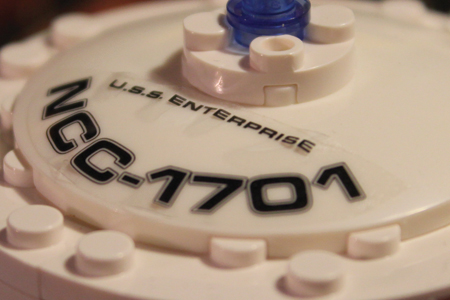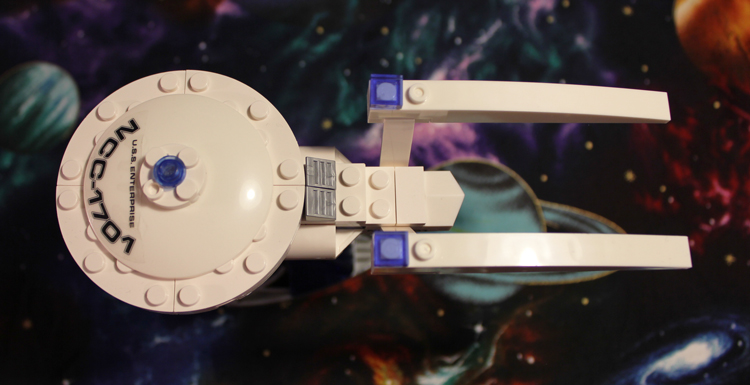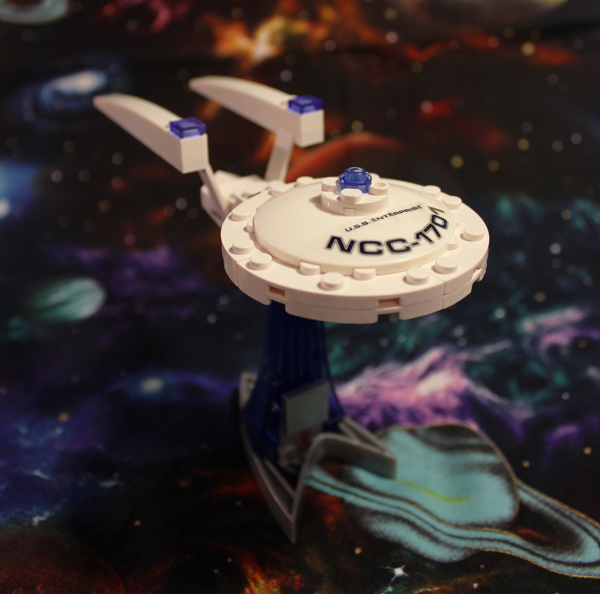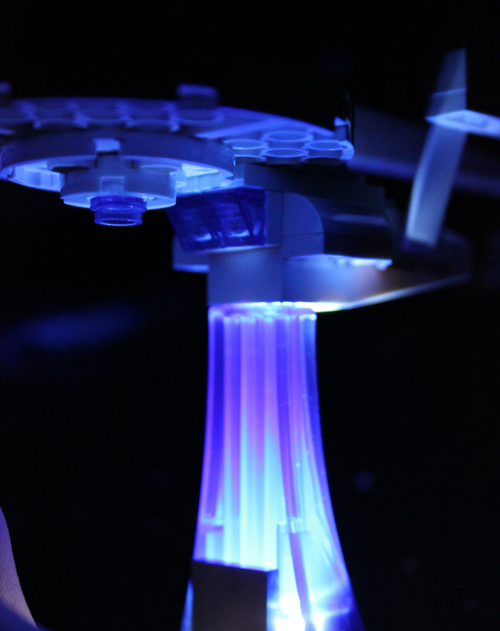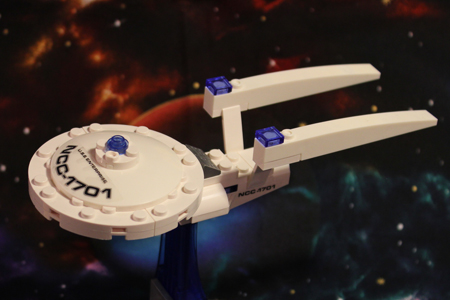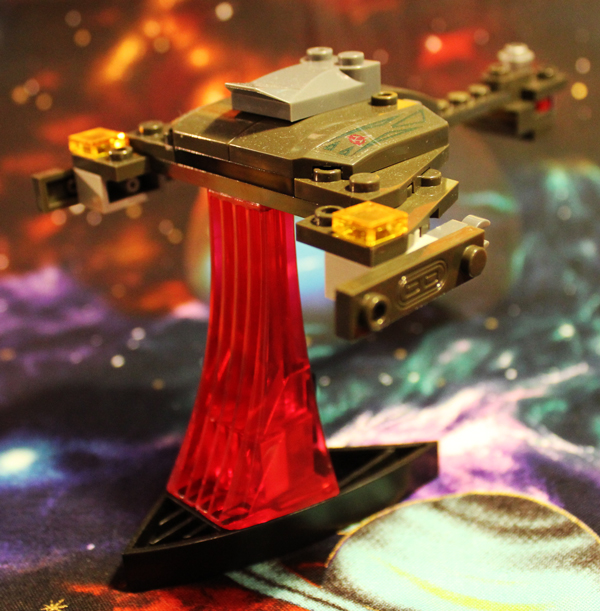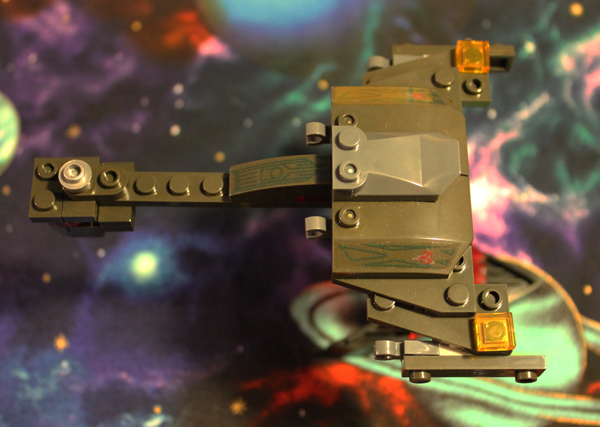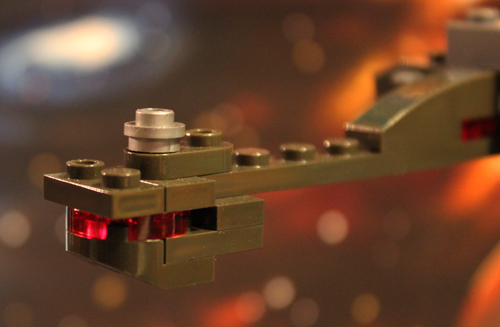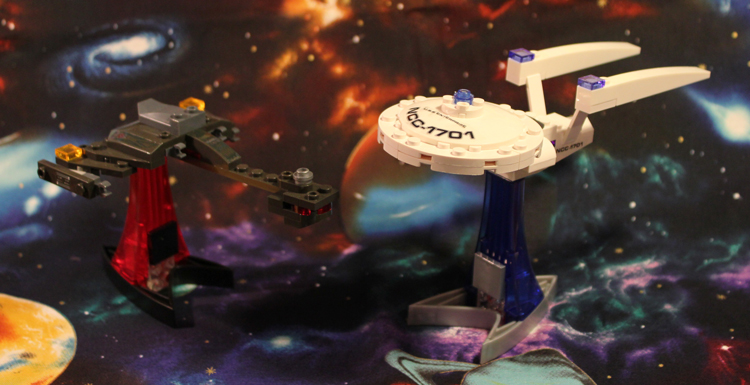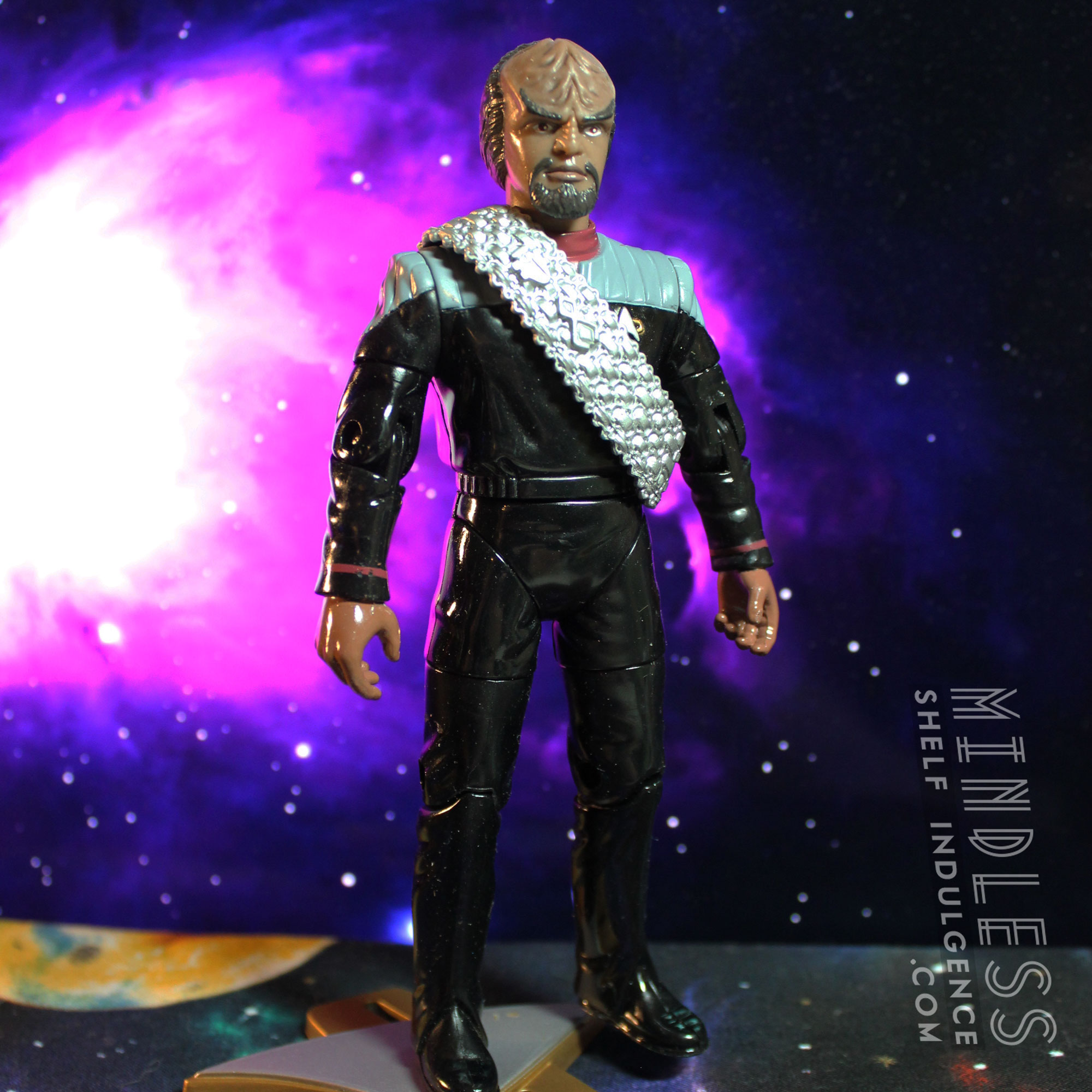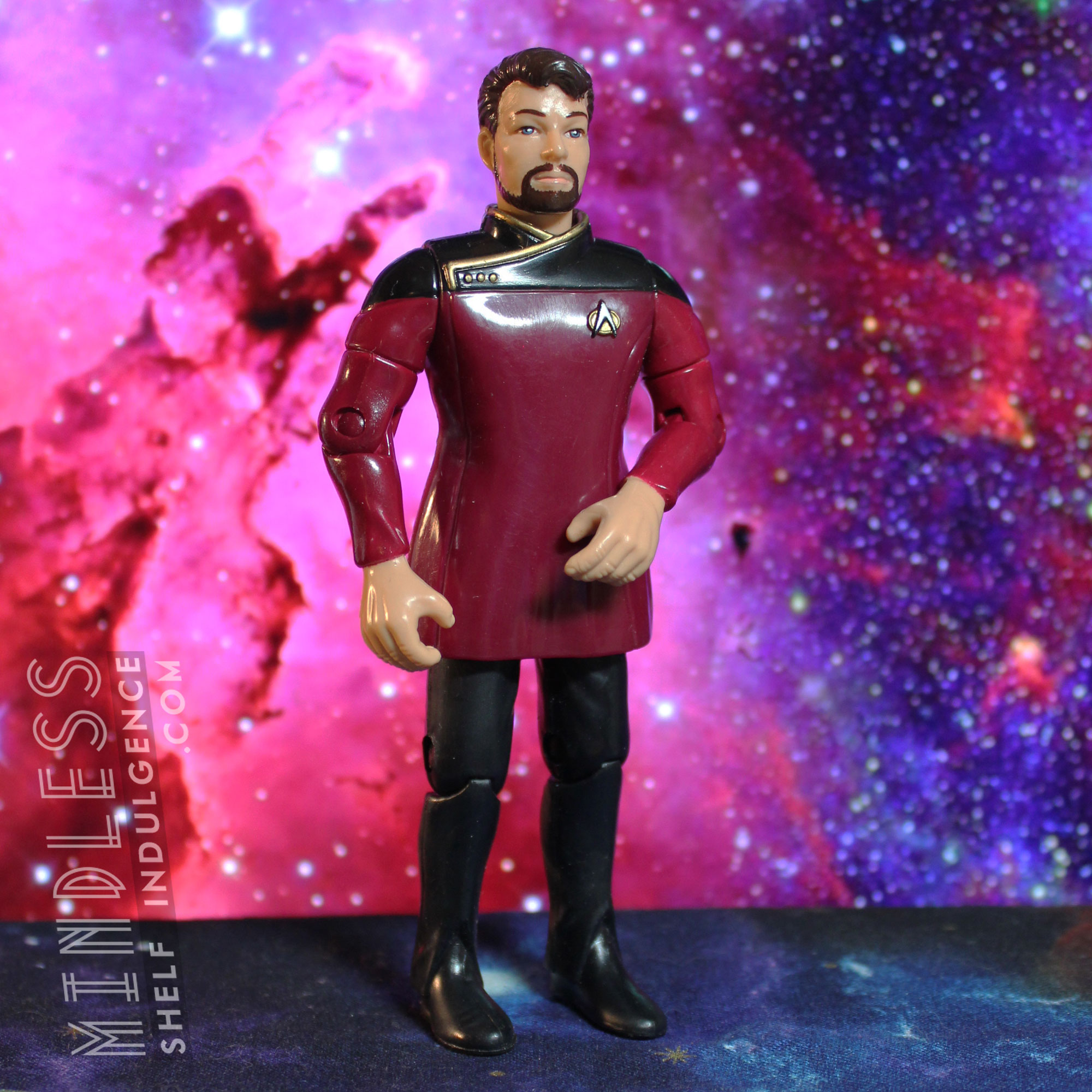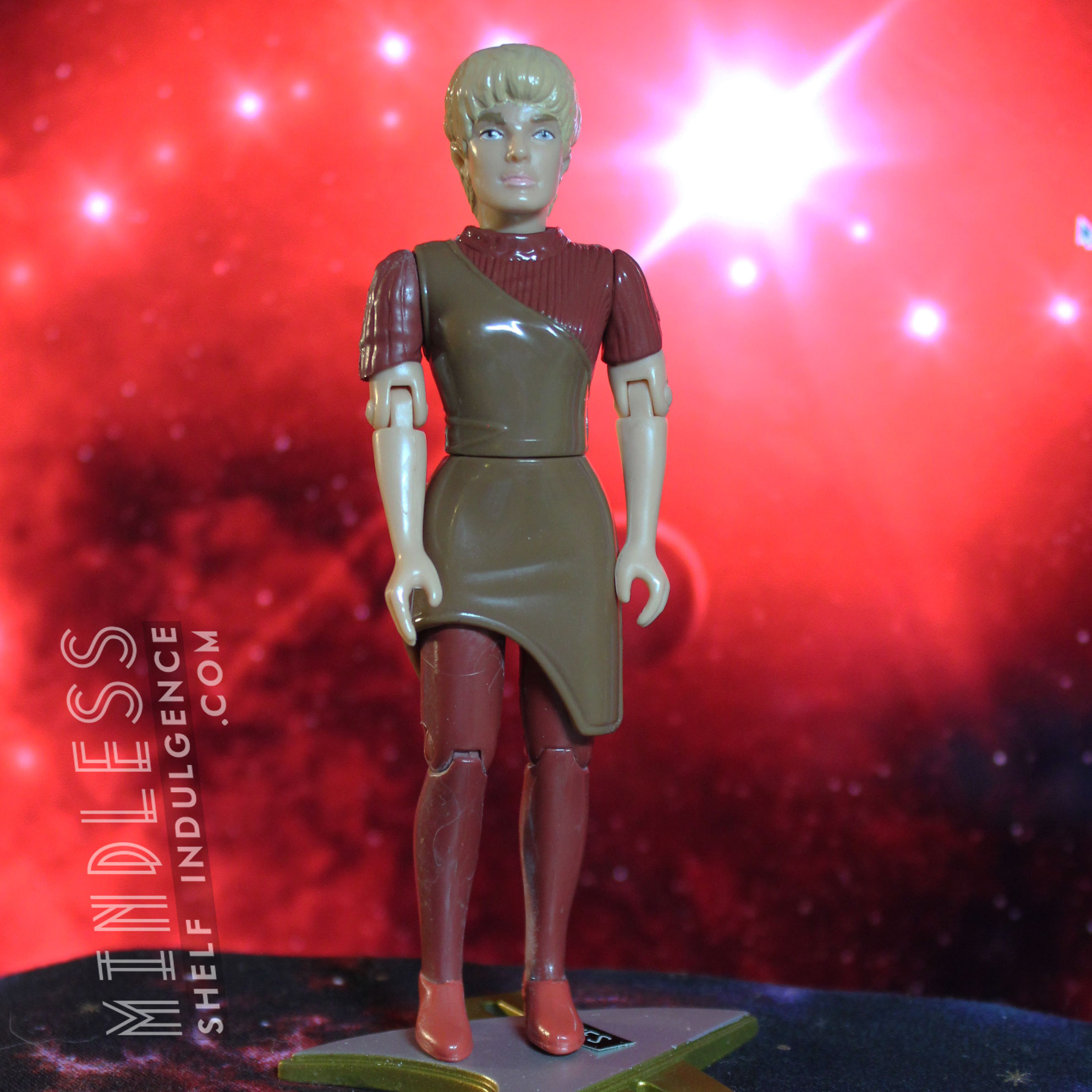They’re stupid expensive, but the process of assembling a LEGO set, brick by brick from a set of detailed technical instructions, is something that isn’t reproduced quite as well by anyone else. Art Asylum’s C3 building sets were notorious for malformed bricks, Nanoblocks’ minuscule size and astronomical price makes them charming but difficult, and Megabloks just don’t stick together right. So, when Hasbro makes something like Kre-O, borrowing heavily from the original, universally known and loved LEGO aesthetic, the comparison is inevitable.
Hasbro has the license for the modern alternate-universe Star Trek currently appearing in theaters. Don’t call it a reboot, because it’s not. Don’t dumb down something that includes a character from the Trek canon we know and love. This isn’t a process of doing Star Trek over; it’s expanding Star Trek in ways that Gene Roddenberry probably never anticipated, both narratively and thematically. So it’s an alternate universe without facial hair to distinguish it from the plain ol’ “regular universe”, but it’s still an alternate universe. New Star Trek also might have more unnecessary melodrama and weird lighting effects, but it’s still Trek. And they have Robocop. Don’t forget about Robocop.
Just like the “new” Star Trek, Kre-O is a line that relies very heavily on the success of its predecessors without innovating too boldly. You use the same shapes and names, you tweak a backstory or an alien forehead, and people don’t have to think too hard, or adjust to something wholly new. You have a pre-packaged set of fans who will, love your new product or hate it, observe it energetically, and that’s where you profit. All without having to create something wholly new. Both Star Trek and Kre-O exist in this obliquely parasitic place, so it’s an interesting place for these things to cross over.
Hasbro’s Kre-O line does a few things in the Star Trek universe, but it doesn’t venture into “classic” Trek. Collecting Trek is a dangerous game, and soured by the actions of Diamond Select, who I’ll never completely forgive for ending their Deep Space Nine line with an Ezri Dax… but not a Quark. Fuckin’ Quark, guys. The life of the show. That’s like making a set of Beatles that omits Paul but includes includes Heather Mills’ fake leg. Compound this with the nerd-legendary “Playmates 1701 Disaster”, and you have a lot of jaded Trekkies. In light of this New Trek line, the only real option is to pick up the two things that most resemble the original things : the Starship Enterprise and a Klingon Battle Cruiser.
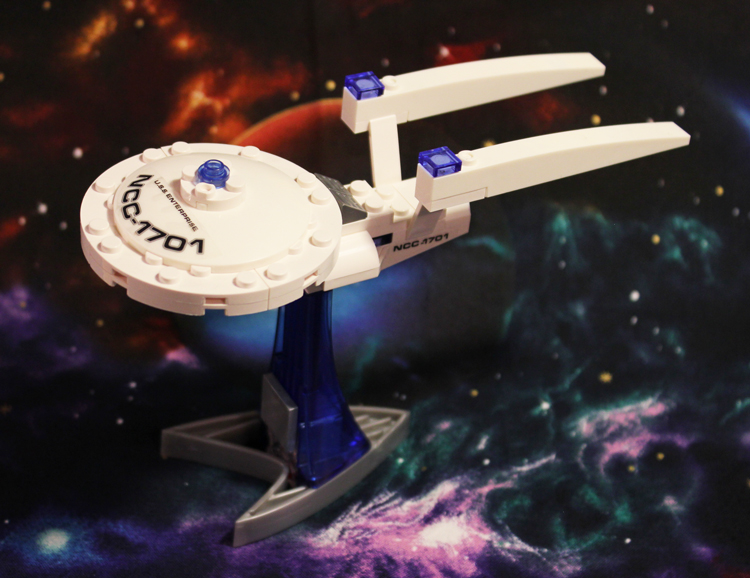
At 39 pieces (and about six bucks), the U.S.S. Enterprise is charming. When a 40-piece LEGO set costs at least twice as much, Kre-O might feel a little bit like slumming it at first, but it’s definitely not. Not only are these LEGO compatible, but they include a lot of unusual pieces to enhance your LEGO models. Purists may string you up and let the vultures pick you apart for introducing foreign elements into the equation, but serious builders welcome the addition of pieces which are both eclectic and affordable. Brand loyalty be damned. These hurt just as much when you step on them, and that’s what really matters.
While there’s nothing tremendously ingenious about the model itself, it’s still pretty slick and very easy to assemble in a few minutes, without making too much effort to disguise the fact that it’s made up of interlocking bricks. Expose the hell out of those studs, Kre-O. These models, much to the chagrin of someone with bulky, texting-prohibitive man-fingers, require sticker placement. While I can generally get these hands to operate with a surgical precision when painting and drawing, stickers are another battle I’m rarely equipped for. When I come within ten feet of a sticker, my hands emit a defensive grease which will immediately make sticker application (and peeling a banana) an exercise in futility. I don’t know if I’m entirely to blame for the bubbly sticker placement on the forehead of the Enterprise, though. A flat sheet won’t physically lay on a curved surface without a little bit of bunching, unless a sliver is cut out to account for the curvature. While pre-printed parts are usually the way to go, I can deal with a bit of bubble at this price.
The best feature here is the light brick, which is exactly what it sounds like. The device is not unique to Kre-O, but it’s way less expensive here, and used to illuminate the translucent base on which the Enterprise sits, atop the classic Trek insignia. The brick gives the bottom of the ship a slight ambient glow when the two prongs of the insignia are pinched together, but doesn’t travel to the other translucent portions of the ship – which might seem obvious to anyone with a realistic view of the world and physics. These things become clearer as the magic drains from your life, like blood pooling around the channels of a cutting board.
As a collector of starships, it was impossible to pass this up.
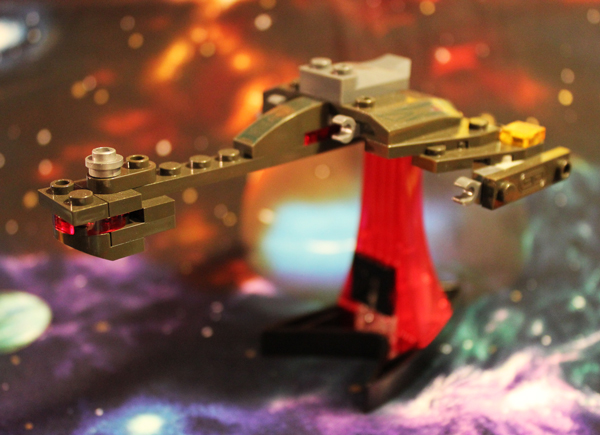
The Klingon D7 Battle Cruiser is equally rad, with just enough classic flavor to make it worthwhile. While the Klingons barely made an appearance in the film itself, it would be impossible to improve upon the Viking-inspired Klingons of original Trek anyhow, and one can never have too many alien spaceships. One thing I’ve always loved about science fiction, and Star Trek in particular, is that alien races are often reduced, simplified and exaggerated to one or two human emotions and motivations, and there’s no better avenue towards understanding others and ourselves than observing these fictional interactions. The Klingons love life and death alike, lust for adventure and honor. The Borg are the need to assimilate and homogenize and contribute, unintrusively. The Ferengi are human avarice driven to a poisonous extreme. And the humans? They’re usually curious wusses, a disparate and ineffectual melange of the worst parts of every alien they encounter, but quietly outraged at how other races conduct themselves, but by the end of the story, they either adapt or die. Usually with the help of fancy weapons.
Big-screen Klingons? They just like to shoot stuff.
Everything said about the Kre-O Enterprise can be repeated here, but in red. The dark colors of the ship absorb the red light immediately, and don’t really express the same kind of glow as the Enterprise, it’s still a neat effect. And it’s easy to appreciate the Calder-like balance of the ship on its base.
Kre-O’s Star Trek line expands into scene-specific dioramas, character figures, and a much larger Enterprise, but I’ll stick with the miniature models. Doing more with less, constructing with a limited palette, conveys a higher sense of design, and even more important than being nerd fetish items, these are well-designed.
 C. David is a writer and artist living in the Hudson Valley, NY. He loves pinball, Wazmo Nariz, Rem Lezar, MODOK, pogs, Ultra Monsters, 80s horror, and is secretly very enthusiastic about everything else not listed here.
C. David is a writer and artist living in the Hudson Valley, NY. He loves pinball, Wazmo Nariz, Rem Lezar, MODOK, pogs, Ultra Monsters, 80s horror, and is secretly very enthusiastic about everything else not listed here.
